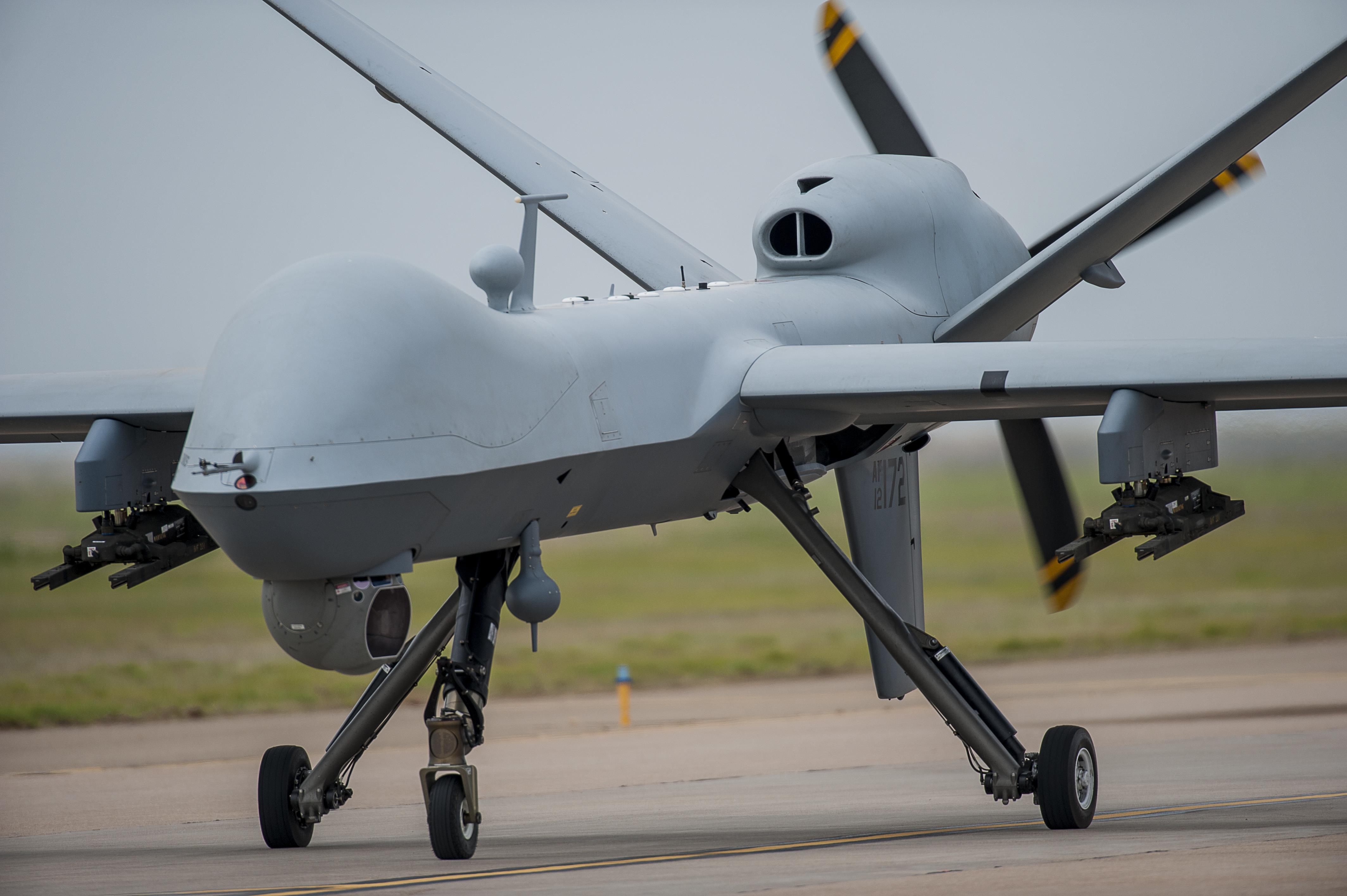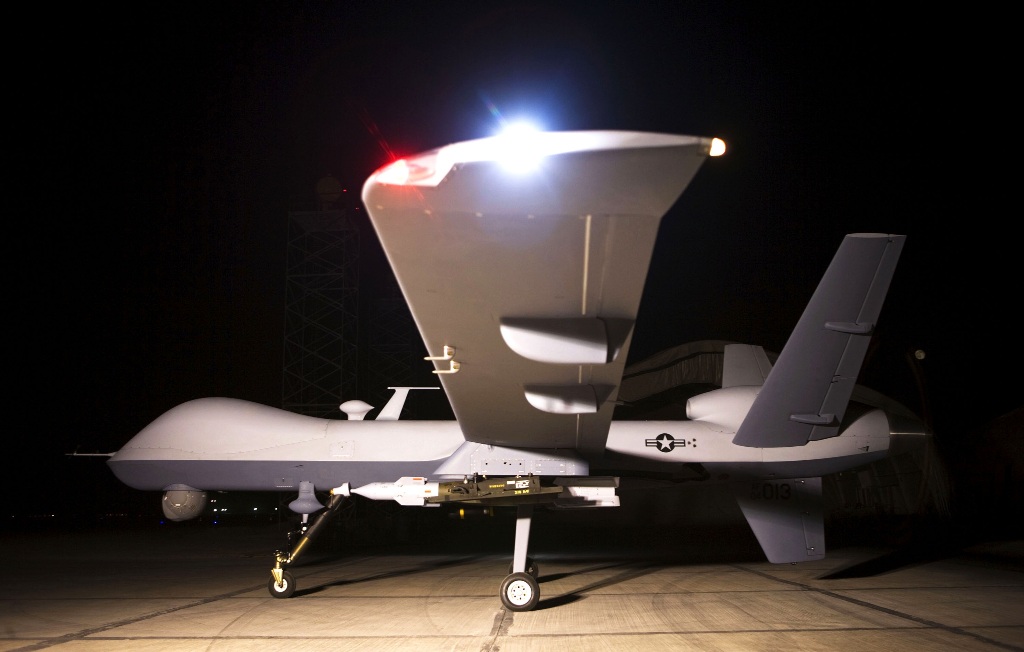
Here are a couple of articles on drones in the US inventory and anti-drone technology.
9/16/16 (yeah, about a year old) – Strategy Page – Warplanes: Reapers Replace Predators – Good background on MQ-9 Reaper.
USAF bought another 30 Reapers in 2016 at a price tag of $13M each. This will bring the total inventory up to 200 by 2019. Article says there were almost 150 Reapers currently in service back in mid-2016.
The recent purchases are what’s called the ‘block 5’, which will be replaced by the ‘ER’ model. The ER version will have more endurance at 35 hours. It will also have an engine modification to allow higher takeoff weight.
Key stats from the article:
- Weight 4.7 tons
- Length: 36 feet
- Wingspan: 66 feet
- Has six hard points, which means it can carry up to six different loads

Armament listed in the article:
- Up to 8 Hellfire missiles (AGM-114 Hellfire; air-to-surface precision-guided missile; length 64’ to 69’; weight 100# to 110#; variety of warheads, typically in 20# range)
- 2 Sidewinder (heat seeking) or 2 AMRAAM (radar-guided) air-to-air missiles
- 2 Maverick missiles (AGM-65 Maverick; air-to-ground precision-guided missile, dimensions 8’ x 12”; weight in range of 462# to 675#; warhead 126# shaped-charge or 300# penetrating/fragmentation)
- 2 x 500# smart bombs (gravity bomb with guidance kit attached which converts to guided weapon)
Back to the introductory point: the MQ-9 Reaper is slowly replacing the MQ-1 Predator.
7/18/17 – Popular Mechanics – The Army’s Drone-Killing Lasers Are Getting a Tenfold Power Boost – The Army currently has two laser systems, a 10 kilowatt laser mounted on a truck and a 5 kilowatt system mounted on an armored vehicle, such as a Stryker.
This is not a lot of power, but is enough to destroy a drone, called a UAV. Demonstration shows burning the fuselage of a drone seriously enough that rudder and elevator control are lost, causing loss of control and a tumble out of the sky. Results of another test is illustrated by a commercial drone which visibly has severe burns on about one-third of the body.
The weapons are powerful enough to counter drones on the battlefield. They do not have enough energy to knock down a full-sized aircraft, destroy artillery shells, or kill a missile.
The goal is to increase the 5 kw laser to 50 kw by 2018 and step up the 10 kw system to 100 kw by 2022. That level of power would be enough to take out an aircraft or missile.
One thought on “Update on military drones and anti-drone technology”